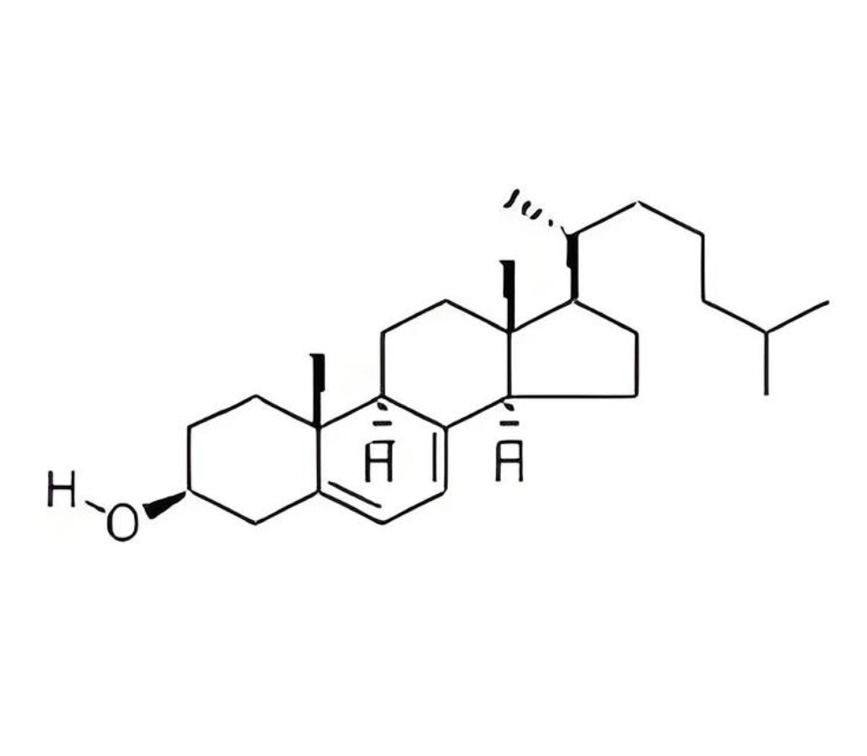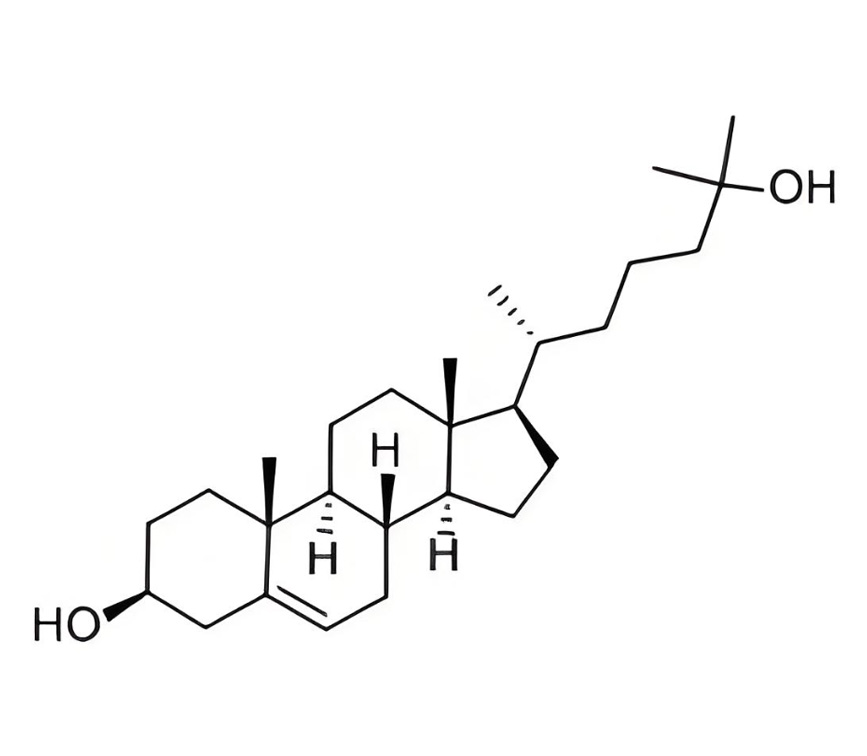Introduction to 7-Dehydrocholesterol
Dehydrocholesterol: A Key Precursor for Vitamin D Synthesis and the Core of Multifaceted Applications
7-Dehydrocholesterol is an important derivative of cholesterol. Due to its unique chemical structure and biological functions, it has become a core substance in vitamin D synthesis, the pharmaceutical industry, and biomedical research.
I. Core Characteristics: Synergistic Structure and Function
Chemical Structure: It contains a steroidal backbone and double bonds at positions 7-8, which impart phototransferability and lay the foundation for subsequent functions.
Core Biological Function: As a direct precursor of vitamin D₃ (cholecalciferol), it is converted to vitamin D₃ in the skin upon exposure to ultraviolet light (UVB), thereby regulating calcium absorption and bone health. It is a key step in the body’s natural synthesis of vitamin D.
II. Clinical Value and Practical Properties
Metabolism and Disease Associations: Abnormal metabolism may be associated with genetic diseases such as congenital adrenal hyperplasia (CAH). Monitoring its levels can help assess vitamin D synthesis and bone health. Stability and Storage: While chemically stable, it is sensitive to light and high temperatures and must be stored in a cool, dry, dark environment to maintain its activity. This is crucial for quality control in industrial production.
III. Multi-Field Applications: Broad Value from Health to Industry
Vitamin D-Related Fields
Natural Synthesis in the Human Body: Photoconversion into vitamin D₃ through the skin is a “natural pathway” for maintaining calcium and phosphorus metabolism.
Supplement Production: It is used as a raw material in the preparation of vitamin D supplements, helping to prevent diseases such as vitamin D deficiency and osteoporosis.
Pharmaceutical Industry: As a key intermediate, it is used in the synthesis of steroid drugs, hormones, and various bioactive compounds, serving as an important building block for drug research and development.
Medical and Biological Research
Metabolism Mechanism Research: It provides core targets for understanding the vitamin D synthesis pathway and cholesterol metabolism, helping to understand the pathogenesis of related diseases (such as osteoporosis).
Disease Research Models: The association between metabolic abnormalities and genetic diseases provides a research basis for disease diagnosis and treatment development. Biochemical Experiments
It serves as a standardized reagent, verifying the accuracy of experimental methods, and is also a fundamental analytical component in cholesterol and vitamin D biomarker research.
Due to its central role in vitamin D synthesis and its diverse applications, dehydrocholesterol has become a key substance connecting human health, the pharmaceutical industry, and biomedical research, continuously providing important support for the development of these fields.










